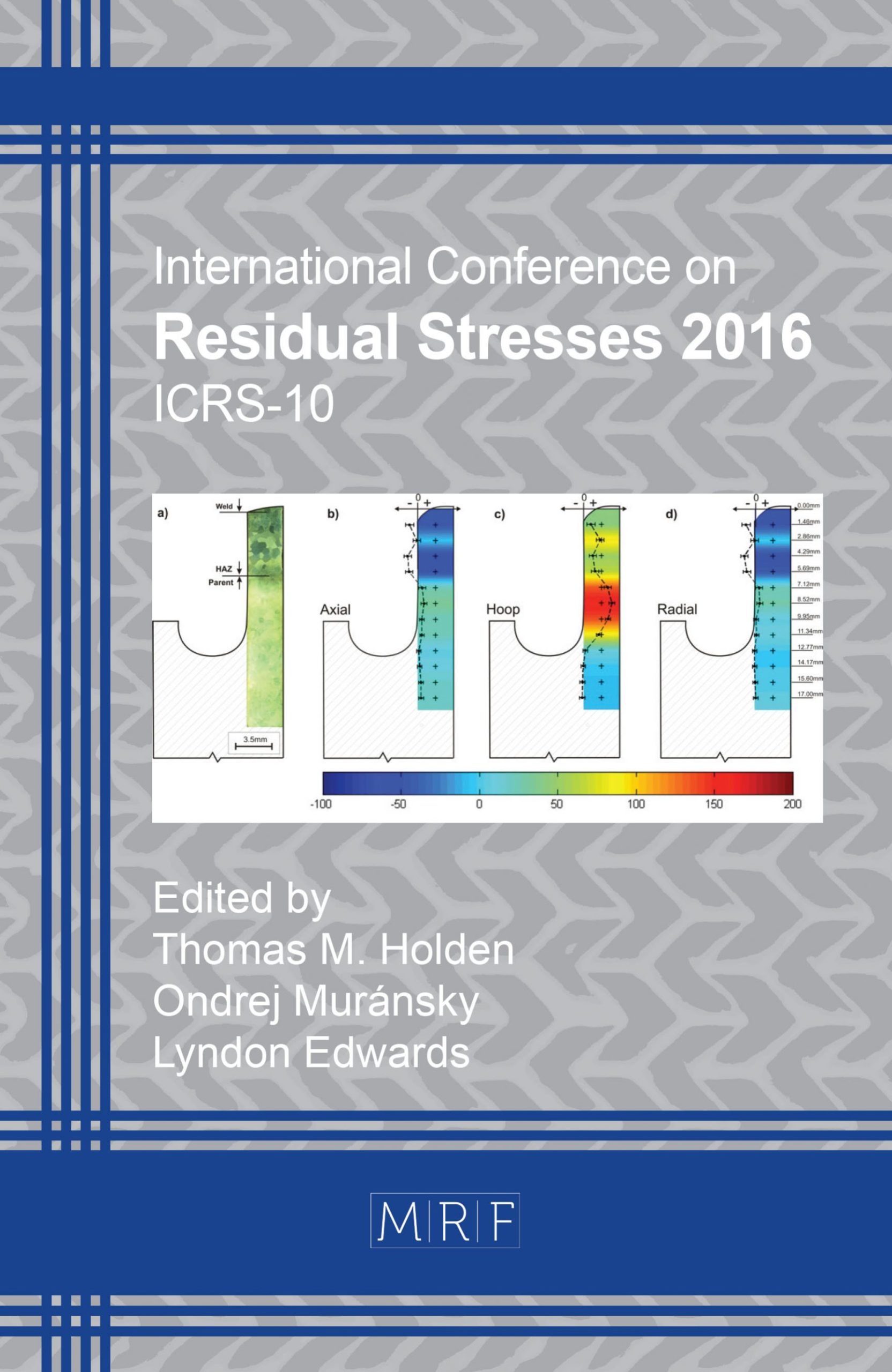Elastic and Elastic-Plastic Behaviour of a Crack in a Residual Stress Field
G. Wua, C. Airdb, D. Smith, M. Pavierc
download PDFAbstract. The behaviour of a crack in the centre of a plate subject to a far-field stress has been studied where the plate contains an initial residual stress. Elastic and elastic-plastic conditions have been considered. For elastic conditions a series of analyses based on stress intensity factor solutions have been developed to calculate the state of opening and the stress intensity factor for cracks of different lengths relative to the size of the residual stress field and different magnitudes of applied stress relative to the magnitude of the residual stress. For elastic-plastic conditions a strip yield model has been used to develop a similar set of analyses. The results of these analyses compare closely with those of finite element modelling.
Keywords
Fracture Mechanics, Residual Stress, Finite Element Analysis, Strip Yield Model, Plasticity
Published online 12/22/2016, 6 pages
Copyright © 2016 by the author(s)
Published under license by Materials Research Forum LLC., Millersville PA, USA
Citation: G. Wua, C. Airdb, D. Smith, M. Pavierc, ‘Elastic and Elastic-Plastic Behaviour of a Crack in a Residual Stress Field’, Materials Research Proceedings, Vol. 2, pp 199-204, 2017
DOI: http://dx.doi.org/10.21741/9781945291173-34
The article was published as article 34 of the book Residual Stresses 2016
![]() Content from this work may be used under the terms of the Creative Commons Attribution 3.0 licence. Any further distribution of this work must maintain attribution to the author(s) and the title of the work, journal citation and DOI.
Content from this work may be used under the terms of the Creative Commons Attribution 3.0 licence. Any further distribution of this work must maintain attribution to the author(s) and the title of the work, journal citation and DOI.
References
[1] Terada H. An analysis of the stress intensity factor of a crack perpendicular to the welding bead, Engng. Fracture Mech., 8 (1976), 441-111. http://dx.doi.org/10.1016/0013-7944(76)90024-2
[2] Chell GG and Ewing DJF. The role of thermal and residual stresses in linear elastic and post yield fracture mechanics. Int. J. Fracture, 13 (1977), 467-479
[3] Labeas G and Diamantakos I. Numerical investigation of through crack behaviour under welding residual stresses. Engineering Fracture Mechanics, 76 (2009), 1691-1702. http://dx.doi.org/10.1016/j.engfracmech.2009.03.006
[4] Tada H, Paris PC, Irwin GR (2000). The stress analysis of cracks handbook (3rd edition), ASME Press, New York. http://dx.doi.org/10.1115/1.801535
[5] Beardsmore DW (2008). A code for the calculation of J for cracks inserted in initial strain fields for the role of J and Q in the predictions of crack extension and fracture. Proc. ASME 2008 Pressure Vessels and Piping Conference, Chicago, USA, Paper No. PVP2008-61169, 955-966. http://dx.doi.org/10.1115/pvp2008-61169
[6] Dugdale DS (1960). Yielding of steel sheets containing slits. J. Mech. Phys. Solids, 8, 100-104. http://dx.doi.org/10.1016/0022-5096(60)90013-2
[7] Barrenblatt DS (1962). The mathematical theory of equilibrium cracks in brittle fracture. Adv. Appl. Mech. 7, 55-125. http://dx.doi.org/10.1016/s0065-2156(08)70121-2
[8] Burdekin FM and Stone DEW (1966). The crack opening displacement approach to fracture mechanics in yielding materials, J. Strain Analysis for Eng. Design, 1, 145-153. http://dx.doi.org/10.1243/03093247V012145































